Chris Jones's Blog, page 11
December 20, 2018
What REALLY Happened At the Twisted50 Awards and Launch?

What a SPECTACULAR evening we share at the Twisted50 vol 2 book launch and awards last Tuesday. The video will give you a sense of the event, the show and the passion present on stage.
For those not present, here is a list of the main category winners for both books (which you can now get on Amazon).
Drum roll please…
Twisted50 vol 2 Winners
Best Story (1st place) – Brain Drain written by Lee Burgess
Best Story (Joint 2nd place) – Wholesale Flesh Club written by Melissa Szydlek
Best Story (Joint 2nd place) – The Art is Absent written by Leo X Robertson
Most Twisted Tale – Worms written by Emma Pullar
Best Character – Clive in Market Research written by Richie Brown
Best Death – Teddy by written Paul Shearer
Most Outstanding Original Voice – Black Ink written by Penegrin Shaw
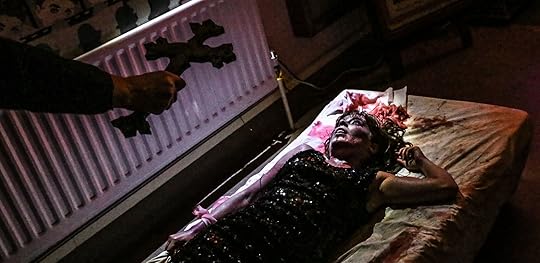
Fabulous evening last night at the Cinema Museum. Huge thanks to Chris and the team for organising such a brilliant, spooky, fun event. Great to be able to come together and celebrate all the talent on show in Twisted volume 2 and Singularity50.
Caroline Slocock
I just wanted to say what a huge thrill it was to be invited to the Create 50 Twisted 2 / Singularity Awards at the Cinema Museum, London where so many writers works were celebrated. It is a privilege to be recognised for something for which, certainly speaking for myself, when writing my piece, recognition was not on my mind, but was simply trying to serve the story. To then discover that other people have connected with the story and the emotional impact of what you have written is the best reward anyone can receive, to then have that elevated to recognition by your peers is exceptional. Thanks again for a marvellous night where old friends were reconnected and new ones discovered.
Les Grice
What a GREAT evening…!
Chris Jones
www.Twisted50.com
November 30, 2018
Watch our Christmas Film ‘Never Too Late’
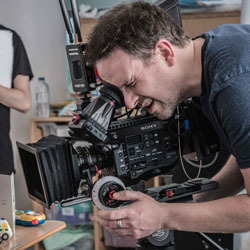
Earlier this year we shot this little Xmas film to highlight the challenges some older people face in the winter months. It grew from the idea and question, ‘what would happen if Father Christmas needed physio?’
The script for ‘Never Too Late’ was written by LondonSWF delegate Jon Ryan who we also collaborated with on ‘Rehab Matters’ that was a huge success for the Society of Physiotherapy last year.
We are all very proud of this little movie too, it does seem to bring a tear to the eye for many people, and also genuinely helps highlight an issue.
 You may also see a two minute version floating around on Facebook and Twitter also.
You may also see a two minute version floating around on Facebook and Twitter also.
Of course it was made for very little money and of course, I want to thank and congratulate everyone involved, production, camera… But especially the often under appreciated trifecta of costume, makeup and production design whose life was made hell by many locations, set over several decades, with an enormous cast and KIDS!
We even pulled snow out of the bag with a super cheap snow machine of Amazon. So thank you Linda, Jason and Natasha and your respective hard working and in this case, very much appreciated teams.
As an aside, and also part of the genesis of the narrative, not many people know this but when I was a young man, I was a ‘Stunt Santa’.
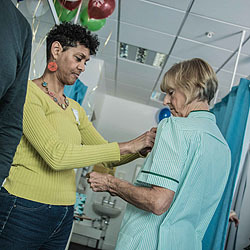 Wait what? I was the Santa that came into town on a boat or on a fire engine, hanging on for dear life in the days before Health and Safety. As I entered the department store there would be a moment where I would disappear into the grotto, only to do a switch with the old man who would play the ‘real Santa’ for the kids – he would come out and the illusion was sealed. Parents could always see the switch, but the kids never seemed to. I do love the magic.
Wait what? I was the Santa that came into town on a boat or on a fire engine, hanging on for dear life in the days before Health and Safety. As I entered the department store there would be a moment where I would disappear into the grotto, only to do a switch with the old man who would play the ‘real Santa’ for the kids – he would come out and the illusion was sealed. Parents could always see the switch, but the kids never seemed to. I do love the magic.
I do hope you enjoy watching as much as we enjoyed making it! And here are the behind the scenes we also put together for the film…
Onwards and upwards!
Chris Jones
My movies www.LivingSpiritGroup.com
My Facebook www.Facebook.com/ChrisJonesFilmmaker
My Twitter @LivingSpiritPix
Sign up to my mailing list for updates on
events, books and free film making tools
November 22, 2018
The Guerilla Filmmakers Masterclass Black Friday… MAKE YOUR FILM!
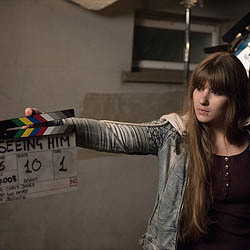
 It’s time to take your filmmaking game to the next level…
It’s time to take your filmmaking game to the next level…After being asked what fells like 1,000 times, I am bringing the Guerilla Filmmakers Masterclass back. And with an eye watering deal for the two day rollercoaster that will arm you in your heart, mind and soul to make your movie NOW!
I used to charge £300 for this two day event, and now it’s £199… But for Black Friday it’s discounted to £69… That’s a 65% discount.
Use the code BLACKFRIDAY when you go to pay with the widget on the site.
When: April 27th and 28th
Where: Ealing Studios, West London
URL: https://www.guerillamasterclass.com/
How Much: £199 but get 65% off with code BLACKFRIDAY
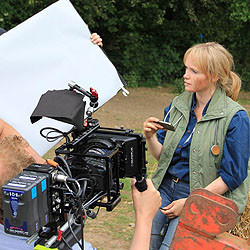 If you want a MASSIVE overload of filmmaking tips, tricks, tactics and strategies…
If you want a MASSIVE overload of filmmaking tips, tricks, tactics and strategies…And if you want the same for your career too…
If you want to learn lessons that are hard won, as well as tried and tested, lessons learned from hundreds of successful filmmakers…
If you want to elevate your peer group and meet hundreds of like minded filmmakers who can help you…
If you want a creative shot in the heart, mind and soul…
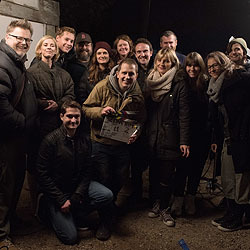 Then without doubt, you should come to the Guerilla Filmmakers Masterclass.
Then without doubt, you should come to the Guerilla Filmmakers Masterclass.
With the BLACKFRIDAY deal, it’s £69 for the two days.
It will sell out.
And it will deliver beyond your expectations. Promise.
To date I have made four feature films, all released in theatres, been Oscar shortlisted, won the Producers Guild Of America best short award, written seven books on filmmaking in the Guerilla Film Makers Handbook series and interviewed literally hundreds of filmmakers. This experience has given me a unique perspective on the challenges we all face in 2019 as filmmakers, we the storytellers who are determined to get our work produced, out there and seen.
While the event is crammed with TONS of filmmaking tips, tricks and information that will save you £££s, loads of wasted time and a mountain of heartache, what makes the masterclass so extraordinary is the atmosphere.
You can’t get that from a book or online, you can only get that in the room.
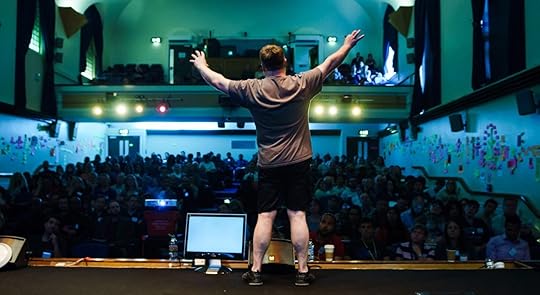
I now know that while the filmmaking information you will get is extremely useful, and the contacts you make essential, what will make a the biggest difference is a powerful shift in the way you see your film and your career.
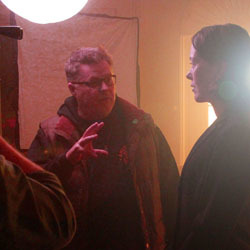
Alongside the massive overload of information, delivering that shift is my goal at the masterclass.
Imagine the best version of YOU, empowered with new information, connected with a new tribe of like minded talent… and then IGNITE that person with passion and drive, the kind you had when you were a kid, when anything you wanted to do seemed possible. Hell, inevitable.
This version of you, this ignited creative, gets shit done, not one day someday, but right here right now.
This shift, fueled by new knowledge, empowered by new relationships, is why this masterclass GETS RESULTS.
At the masterclass, filmmaking success will be hard wired into your mind, body and soul.
 So what will you get? Specifically.
So what will you get? Specifically.
Information
For two straight days I will cram your brain with hard won lessons that will save you money, time and heartache.
Inspiration
I will show you how to take what you know and use it to get your movie made now. I call this Creative Ignition and it’s about getting both what you already know and what you have just learned into massive, unstoppable action.
Connections
We can’t climb the mountain alone, as GFilm veteran Tom Kerevan said in a blog post – he attended GFilm a whle back and met his team at the event. Together, they just made their first feature which is now on Amazon. They are onto their second already. Finding like minded collaborators is key to success, and the room will be full of potential collaborators.
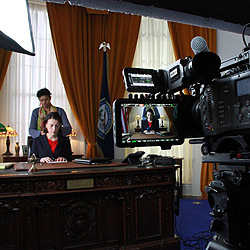 Acceleration and momentum
Acceleration and momentum
By combining the filmmaking knowledge, your new relationships and your INGNITION you will leave in a state of unstoppable certainty.
So, it’s £69 and two days of your life and I am going to give EVERYTHING I have for these two days.
Come or don’t come. One choice will get one result, the other choice a different result. But know that success lies in taking decisions and following through.
If this is resonating with you, take the leap now. If you want to hear from past delegates, there’s feedback HERE…
And the schedule HERE
I look forward to seeing you at the Guerilla Filmmakers Masterclass.
It will be epic. Here are a few comments from past delegates…
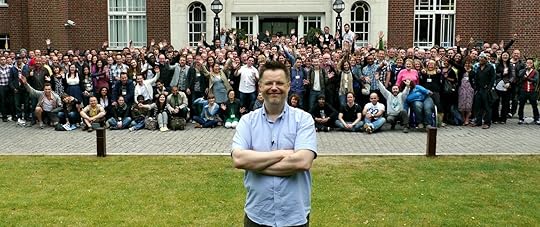
‘Thank you so much for kickstarting my passion for filmmaking again’
Nicola Hague, 10 Stars!!!
‘I loved everything, it was so positive and rewarding while also brutally honest’
Dianne Thomas, Filmmaker
‘Just wanted to say the workshop was stupendous! Brilliant, inspiring and packed with amazing info’
@Mustachioed_Man
‘It was a life changing experience! Feeling so amazing after the end of #Gfilm – Thank you to the amazing people who made it so incredible!
@happydusty
‘Delivered in short bursts of rocket fuel for the soul’
Luke Campbell, Film maker
@LukeTV
Chris Jones
www.GuerillaMasterclass.com
Watch The Complete Impact50 Awards from Create50
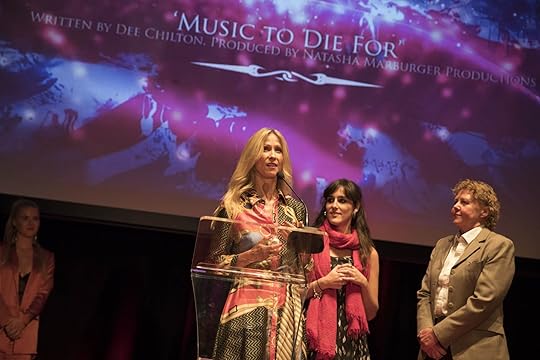
Ahead of the Impact50 re-launch on Dec 18th (and you will likely see lots up changes going on across the site right now), I thought I would share the video of the whole show for The Impact50 Awards at the British Screenwriters Awards 2018. It really was a night to remember and a very special opportunity to put the best of Impact50 in front of the Industry.
Onwards and upwards!
Chris Jones
My movies www.LivingSpiritGroup.com
My Facebook www.Facebook.com/ChrisJonesFilmmaker
My Twitter @LivingSpiritPix
Sign up to my mailing list for updates on
events, books and free film making tools
November 21, 2018
Never To Late and the Casting Process…

Next week we release the short film Never Too Late in time for Christmas. It’s a wonderful little festive gem than explores the need for physio over the colder seasonal months, especially for the older people in our lives. The story evolved from the idea, what would happen if Father Christmas needed physiotherapy?
And we have made a film I am very proud of and cannot wait to share.
Ahead of time, here is a short behind the scenes of the whole casting process.
Looking forward to the release!
Onwards and upwards!
Chris Jones
My movies www.LivingSpiritGroup.com
My Facebook www.Facebook.com/ChrisJonesFilmmaker
My Twitter @LivingSpiritPix
Sign up to my mailing list for updates on
events, books and free film making tools
November 12, 2018
How You Can Make Money With Your No-to-Lo Micro-Budget Film
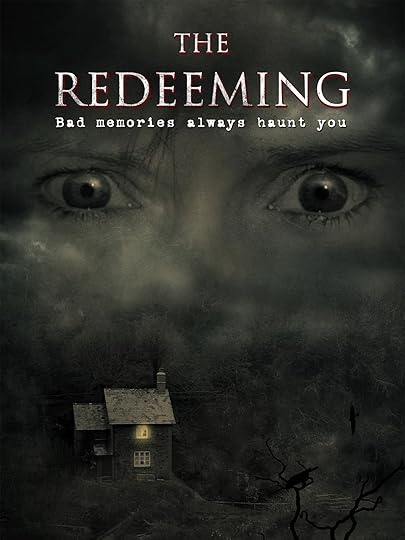
by Brian Barnes
As seriously independent micro-budget filmmakers we need an edge. Any little thing that will make our projects more likely to survive and thrive in the big, cruel marketplace that is feature film distribution.
In pursuit of that edge, before making my first feature film, I did my due diligence and performed as much market research as I could. I attended the Cannes Film Market a number of times and spoke to as many distributors and sales agents as I could in order to determine what kind of films tend to sell, if made by an unknown with no money and no known cast.
Anybody who has ever spoken to any kind of distribution professional will nod in recognition when I say that I was advised to make a “horror, sci-fi, action or thriller”, as they sell the most easily in the marketplace when you have no budget, no known cast and no track record in feature films.
Accordingly, I made my debut feature, no-budget psychological thriller ‘The Redeeming’. The film was picked up by the first distributor I approached, in a deal that took less than 5 minutes to agree. Thereby proving what I had been told about the ease of selling the in-demand genres.
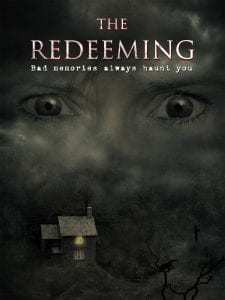 [Sidebar: A few years ago, the real problem for these kinds of tiny films was getting distribution. That problem no longer exists. The issue now is marketing and publicity. We can get our films out there, but it’s still tricky to make our potential audiences aware of our films without having to spend lots of money on advertising and public relations. Anyway, that’s another matter for a later discussion. Let’s just assume that you can find a way to connect with your audience.]
[Sidebar: A few years ago, the real problem for these kinds of tiny films was getting distribution. That problem no longer exists. The issue now is marketing and publicity. We can get our films out there, but it’s still tricky to make our potential audiences aware of our films without having to spend lots of money on advertising and public relations. Anyway, that’s another matter for a later discussion. Let’s just assume that you can find a way to connect with your audience.]
In today’s film marketplace, our indie no-to-low budget films make the vast majority of their incomes from the VOD (video-on-demand) platforms. It would be really helpful, therefore, if we could get hold of some VOD numbers of the general market to help us determine what works and doesn’t work in the marketplace. Unfortunately, the big players – Amazon, Netflix and iTunes – don’t reveal any figures publicly.
Fortunately, I have a very good relationship with our distributor and, as part of our arrangement, they give me their market intelligence. Real numbers from the VOD coal face. The true edge that we all need.
These numbers are impossible to get in any other way, and I am forbidden from divulging them under the terms of our distribution contract. These data reveal some truly astonishing facts. They completely blow the genre ideas above out of the water. The market is completely different from what most distributors would have you believe.
But I can’t tell you any of the details.
However, I can tell you a few things around what they say.
I can tell you for instance, that our distributor has given me data on worldwide performance of 708 low-to-no budget films. Their estimated budgets range from US$10k to US$500k. I can reveal that the bottom 450 of these films are making NO MONEY AT ALL. In other words, 65 percent of these films are making no return whatsoever on their investments. Only the top 70 or so of these films are making any kind of real money. That is, only about 10 percent are making any real returns for their investors.
On the other hand, I can say that we are the top performing British film this distributor represents, coming 45 places in the world rankings above the next British film. We are their 31st highest earning film worldwide, so we are comfortably in the top 5 percent of films overall. We make over 90 percent of our income from Amazon Prime US. Your film has to work in that market to make money, as it’s the only VOD platform that has serious cash up for grabs by micro-indie filmmakers.
I’m not allowed to say how much we are making, but let’s just say it averages about 3 percent of our budget back each month. It doesn’t take a rocket scientist to realise that we’ll be in profit by about 2020.
I estimate that the distributor’s top performing film is making roughly 10 percent of their budget back each month. They have been number 1 in the world for over a year and are therefore almost certainly in profit already.
So, what can we say about the kinds of films that are successful? I have compiled below a chart of the top 40 films in this distributor’s catalogue.
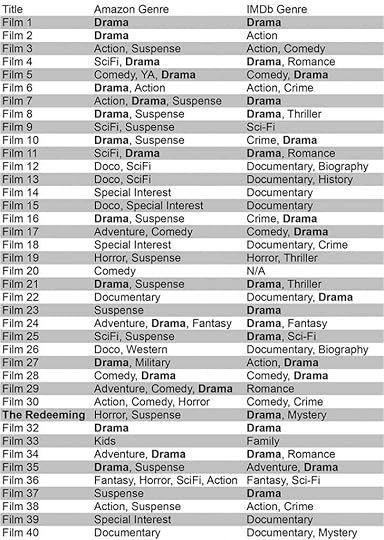
The big surprise is that the top performing genre is actually DRAMA. And there is a lot of growing evidence to support this idea. The spec sale market is moving towards drama scripts; drama is the top performing genre on Netflix and terrestrial TV at the moment, so why shouldn’t it also be the case for micro-budget films too?
Look at the genres in this list. Drama absolutely dominates, accounting for fully half of the films in the top 40 based on their IMDb genre, and 8 out of the top 10 Amazon genres. Interestingly, the IMDb genre is decided by the filmmaker, but the Amazon genre is decided by the streaming platform staff themselves. Notice how drama appears more in the Amazon top 10 list than the IMDb one. Could this be because the Amazon bigwigs know that drama sells better, so they are more likely to describe films in that way?
Why would drama sell better? My hypothesis is that, since most views of these films are on VOD platforms, and most people are used to watching some kind of TV that way, they are looking for “TV style content” on the VOD platforms. So, drama wins, as it’s perceived more as a TV genre.
But, we’ve always been told by the distributors that “drama needs stars to sell it”. These micro-budget films all have “nobody” in them, and yet they are selling. No-budget films seem to buck many of the usual trends.
So, my topline suggestion is that your best chance of making money with a no-budget feature film is to make a drama, and you should be aiming your no-to-low budget project at the US VOD platforms. Especially as this article says that the US (the leading VOD market) is one of the great consumers of drama.
But, there are so many other patterns and trends that I see in the full “private” data, which further prove that micro-budget and no-budget films really are a special case in the market and do not follow the main market patterns. For example, I’d love to share the insight I have gleaned on casting. And it’s probably not at all what you might expect to hear – in fact, it pretty much contradicts the findings of this article, which is based only on publicly available data for bigger budget films. Or I could discuss my observations on whether your IMDb rating has any sway on how well you do. Or there’s a bunch I could reveal about the top performing subject areas for your film, including key character tropes to include for success. But my NDA (non-disclosure agreement) prevents it.
However, as a consultancy service, I’m happy to discuss these areas more concretely on a one-to-one basis, so drop me a line if you want to learn more and do a “market check” on your proposed project.
 Brian Barnes is a London-based director whose debut feature film ‘The Redeeming’ was released in early 2018 on worldwide VOD platforms. The film peaked at number 6 on the Prime US thriller chart and was the number 1 thriller on Prime UK for 6 weeks. The trailer has now been watched well over 150,000 times. Brian’s short film ‘The Urge’ won a Best Film award under jury president Timothy Burrill (producer of Roman Polanski’s ‘The Pianist’).
Brian Barnes is a London-based director whose debut feature film ‘The Redeeming’ was released in early 2018 on worldwide VOD platforms. The film peaked at number 6 on the Prime US thriller chart and was the number 1 thriller on Prime UK for 6 weeks. The trailer has now been watched well over 150,000 times. Brian’s short film ‘The Urge’ won a Best Film award under jury president Timothy Burrill (producer of Roman Polanski’s ‘The Pianist’).
October 25, 2018
The art of anxiety by Tracey Flynn… aka how to face the blank page
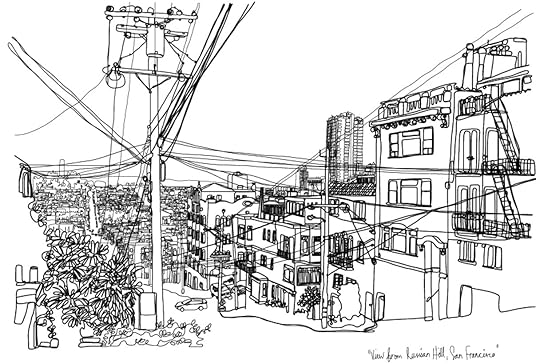
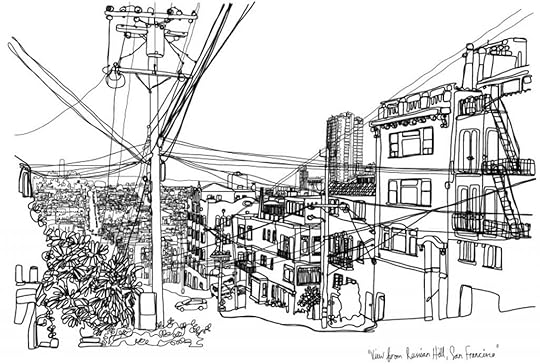
I love my job.
I’m a semi-abstract expressionist artist. That means that I create paintings and illustrations that don’t look like reality, but you can kind of tell what it is.
I love to create a painting for someone that expresses something they didn’t feel able to express for themselves. It’s a wonderful moment when a client sees their painting for the first time, they make a connection and they can’t hold back the emotion.
I love the conversation I have with the canvas as I paint. I work out my frustrations with the world; some I didn’t know I had before I picked up the brush. I love that I get paid to turn some raw, unassuming materials into a colourful, soul-lifting image that I could lose myself in.
Yes, I love my job, but…it’s hard. Not like brain surgery is hard, but like breathing is hard if you actually concentrate on doing it and tell yourself you’ll die if you don’t get it right. Sometimes it’s not a wonderful conversation I have with the canvas, it’s a full-on fight.
I haven’t always been a professional artist. I’ve been a fashion and textile designer, Easter egg decorator at a certain high street chocolatier, a radio presenter and producer, a documentary filmmaker and a screenwriter. I’ve never understood, as someone with anxiety and a fear of judgment, why I would become a professional creative and put myself in a position where I repeatedly invite judgement, often daily. The self-imposed torture doesn’t make sense.
Four years ago, I quit screenwriting as my anxiety became so acute that I couldn’t work and I sought counselling. She suggested I find a task where I didn’t have pressure to create. I knew instantly she was not the right counsellor for me and understood less than I did. To avoid or blame creativity for my problem seemed absurd!
I pulled myself out of that black-hole depression by drawing continuous-line doodles. It was my way of reconnecting with the world; to stop, look and appreciate; to see order, strength and accomplishment; admire marks made by others and to take my place in amongst it all.
Doodles became sketches for paintings, a print shop on Etsy.com and the growing business I have today, including design projects, exhibitions and four-figure sales.
I have to create. It is how I engage with the world. I love my new job, but the anxiety hasn’t gone away.
In his book “Fearless Creating”, psychologist Dr Eric Maisel suggests that anxiety is integral to the creative process and we cannot be productive without it. I’m beginning to understand what he means as I become more aware of my practice. Maybe I was so crippled by mine in the past because I’d not yet learnt how to work with it.
As creatives, we’re always striving to inhabit “the flow”; the mystical moments when all the stars align and the work is creating itself. For me, I’ve noticed a pattern of calm and wildness that leads to somewhere better. It is my favourite place: Bold Town.
Unfortunately the road to Bold Town is unpleasant. It feels like the worst day ever.
I had one of those days today. It was horrific for about two hours and then wondrous bliss!
I’m working on a painting for exhibition, which means it’s not a commission, but a calling card; a passion project that tells people what kind of artist I am. Although it’s a piece that I can experiment with, there is pressure in the ultimate goal and I’m forever mindful of it.
I started off strong in the past week, but today, I hated it. Then I hated myself. I felt the rage rising. I took it out on flies that dared to cross me; (there are quite a few in my garden studio); I threatened to ditch this piece of s**t; I questioned my ability; I’m very unkind to myself in these moments. What on earth makes me believe I can do this?! What is ultimately just one painting, turns into the demise of my whole career!
In my wrath and dejection, I’m not yet aware that magic is about to happen. I come to a crossroads: I could throw the canvas out, but the thought of wasting expensive materials makes me choose the other road. I have nothing left to lose. An alternative tool or material brings uninhibited energy and transforms the ordinary into something unexpected.
And just like that…
I AM IN BOLD TOWN.
In Bold Town there is no self consciousness, no restraint. There is abandon and risk-taking; no second guessing, no judgment. There is freedom. There is true creativity. I make my best work in Bold Town. The more often I visit, the less painful the journey as I grow to recognise the route.
In talking to other creatives, I’ve noticed that we’ve often battled throughout our lives to communicate in the traditional way: through conversation. We’ve always felt, on some level, misunderstood. Therefore we strive to find a way that works for us. We’ve discovered along the way that making something scary, funny, yummy, thought-provoking or moving works to make people listen. Ultimately we all want to be heard.
When I was younger, I struggled to attract attention with my voice. I couldn’t verbally raise a question, offer a solution or comfort, yet a piece of artwork could gain the attention of a whole room without me even being there. Through art [whichever discipline we choose] we’re communicating, telling the world what kind of people we should be.
I want to be connected, joyful, respectful of the past and, above all, bold. Therefore, I am learning, I must embrace the anxiety.
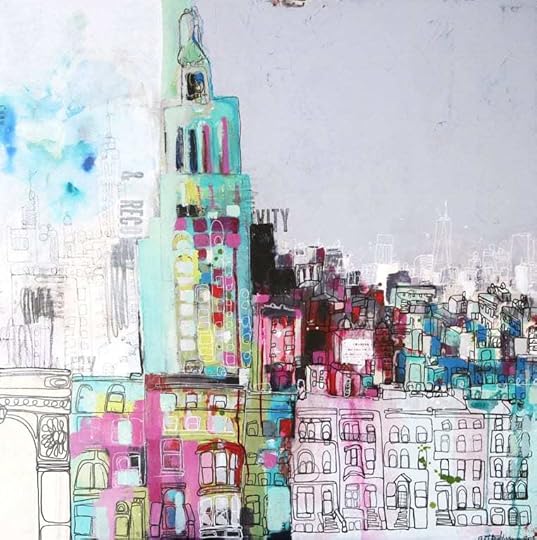
Discover more about Tracey Flynn’s art at artbyflynn.com
Search Art by Flynn on etsy.com
Follow her on Instagram @artbyflynn_uk
October 17, 2018
Meet The Nativity Wins ‘Best Festival’ Film at 22nd Jerusalem Awards at BAFTA
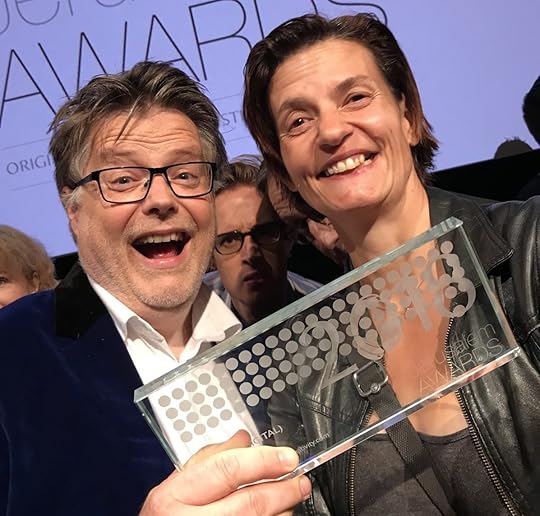
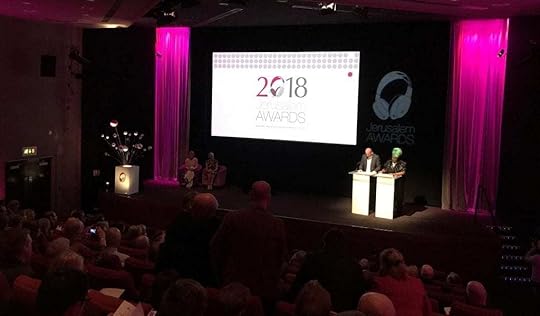
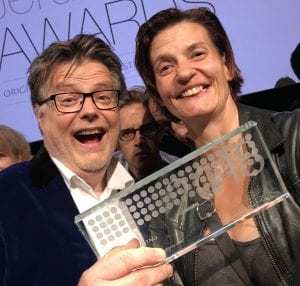 Last night the team behind Meet The Nativity took the stage to accept their award for their hard work in making the time travelling Christmas rom-com that went viral last Christmas.
Last night the team behind Meet The Nativity took the stage to accept their award for their hard work in making the time travelling Christmas rom-com that went viral last Christmas.
The four part webisode series took the offbeat premise of ‘what would happen if you discovered the actual first century nativity taking place the bottom of the garden?’
The whole team was both surprised and delighted to get the award as competition was clearly very tough.
You can watch the first episode below, and watch out this Christmas for a re-run!
Onwards and upwards!
Chris Jones
My movies www.LivingSpiritGroup.com
My Facebook www.Facebook.com/ChrisJonesFilmmaker
My Twitter @LivingSpiritPix
Sign up to my mailing list for updates on
events, books and free film making tools
August 3, 2018
LSF Live! Brand New Live TV show for Screenwriters next Thursday!
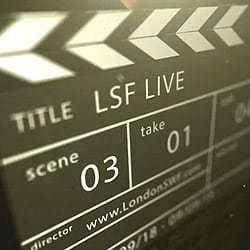
 Join us next Thursday night at 7.00pm UK time for our first LIVE TV show, just for screenwriters. There will be tons of insight from some of the biggest names who have visited the London Screenwriters’ Festival as well as lots of opportunity to join the conversation through the chat widget.
Join us next Thursday night at 7.00pm UK time for our first LIVE TV show, just for screenwriters. There will be tons of insight from some of the biggest names who have visited the London Screenwriters’ Festival as well as lots of opportunity to join the conversation through the chat widget.
The show will be broadcast on Facebook at…
https://www.facebook.com/londonswf/
You can watch on your desktop, phone or tablet.
Expect insight, tips and a little chaos!
See you online… Thursday, 7.00pm UK time…
https://www.facebook.com/londonswf/
Chris Jones
www.LondonSWF.com
June 28, 2018
Frank Spotnitz on the Writers Room Dynamics and 10 Pieces Of Supernatural Advice
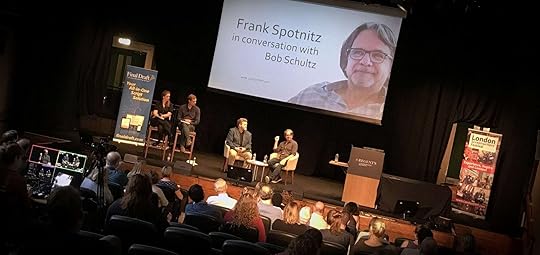
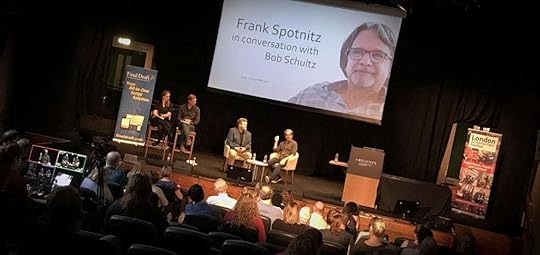
Twenty-Five year television veteran Frank Spotnitz is a big believer in luck. He was lucky that his parents never supervised their son’s voracious and indiscriminate consumption of 60s and 70s television, allowing him to build up a vast catalogue of narrative strategies in his mind. He was lucky that Chris Carter hired him for his first job, and lucky that he thrived in the brutal do-or-die X-Files environment. He was lucky that he signed on to Man in the High Castle, based only on a remembered fondness for the book in his college years. If he had re-read the novel, he might have passed on attempting such a mind-bendingly difficult adaption. And he was lucky that this vastly expensive and controversial show was taken on by Amazon who happened to be in the market for a piece of TV action that would get them noticed.
But of course, when you listen to Spotnitz talk about his world — as those of us who attended his interview at the London Screenwriters’ Conference’s Breakfast Club were privileged to do — clearly this is not a man who simply got lucky. We were in the presence of a great talent: a story teller who is not only a master of structure but has an angel ear for dialogue and a peerless facility for communicating big ideas while still managing to entertain. An obsessive, who constantly rewrites, and who focuses on the little details, such as whether the cars in the parallel (but skewed) world of Man in the High Castle would sport “optimistic fins”.
It was a smashing Breakfast Club get-together. Great venue (who knew there was such a pretty academic outpost hiding in the park?) and I enjoyed the inclusion of actors acting out three scenes from the X-Files. One would have to write copious pages to cover the wealth of insights articulated by Spotnitz in the space of that one session. Here are ten which stood out for me.
The Writer’s Room
Probably because of my background in books, I have always been equal parts intrigued and dismayed by the idea of having to enter the scrum of a writer’s room. As a novelist, you are used to being edited, but you firmly remain the queen of your mouldy castle. But after listening to Spotnitz enthusiastically making the case for the power of collaboration, I am having a rethink about my preference for the author-driven UK television model.
Collaboration, for Spotnitz, is where the magic happens. And he talked about the pain and the gain of being overwritten. The kind of writer he looks for is the kind who hates being overwritten, but then listens and learns and has the humility to accept that the rewritten script can be smarter and better.
Serialised Television Is A Boxing Match
I was fascinated to learn that Amazon has a tool for measuring “viewer engagement”: how much time does the viewer spend actually watching the television screen as opposed to texting, visiting the loo, opening the fridge. The surprising result is that with shows that go really fast, viewer engagement is less. Spotnitz uses a boxing metaphor to explain the pacing of a serialised TV episode. Start with slow punches and then speed up to throwing punches in bunches towards the end. This is how you hook the viewer into entering the “just-one-more-episode-before-I-go-to-sleep” binge mode.
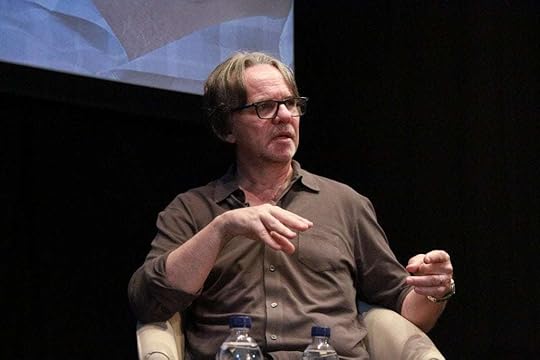
Don’t Be In Such A Hurry
Spotnitz points out that in a serialized story, you are only “going to pass this point in your characters’ lives once” – so the writer should take care to mine that moment fully and not place his foot on the plotting pedal so hard that he skips moments of characterization, emotional drama and texture.
Don’t Give Away Everything At The Beginning
Spotnitz often fights network and studio executives who expect expansive exposition in the opening episodes. Spotnitz believes in giving the audience only what they need – even slightly less than what they need — so they’ll keep watching. Make them want to know, and then tell them.
Aim To Entertain
The streaming environment allows for an intellectually challenging, sophisticated show like Man in a High Castle. Even so, Spotnitz strongly believes in his aim to entertain. Yes, he wants to make you think, but to do so he needs to entertain you first, because if you are not entertained and moved emotionally, you will not continue to watch — no matter how profound the ideas.
Writing Is External Therapy
What Spotnitz likes about being a writer is that by figuring out his characters and what’s true about them, he is learning something about himself and the way in which he sees the world. One such insight: you must do the right thing if you want to live with yourself. But don’t expect the world to reward you for it. You will be punished.
Another: The truth is out there but it cannot be grasped. We look into the skies and try to understand the mysteries of the universe, knowing we will never find it.
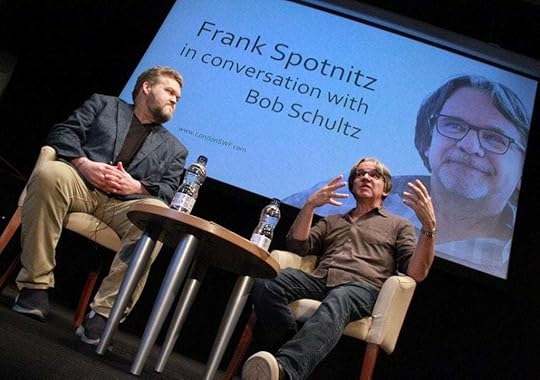
Streaming Audiences Are Sliced Into Many Micro-Segments
Spotnitz makes the salient point that the big, popular audience which used to watch network television is now the least well-served. Which is why it is important for him to still do a show like Ransom, his CBS hostage negotiating drama, which is targeting the kind of audience that used to wait for their crime-of-the-week drama.
Aim High. No, Not That High. Higher.
The image that will stick with me is of Spotnitz hand-chopping the air above his head and making the impassioned argument that this lofty altitude – this rarefied air where you’re attempting to write the best thing ever – is what we, as writers, must strive for.
A lot of writers, he says, look at what’s out there and say: I can write that. But this should not be the target. The target should be much, much more ambitious. Because if what we write is only OK, then we are blurring the focus of our collaborators and we will end up with mediocre fare.
Persistence Is More Important Than Talent
Mr. Spotnitz. We really hope so…
When Luck Comes, Make Sure You’re Ready
…and that when luck arrives, we’ll be ready for it. Of course, we will be. We want to believe.
Natasha Mostert is an award-winning novelist who segued into scriptwriting after two of her novels were optioned. She is a member of the WGAW.
If you would like to know more about the London Screenwriters’ Festival click HERE.



